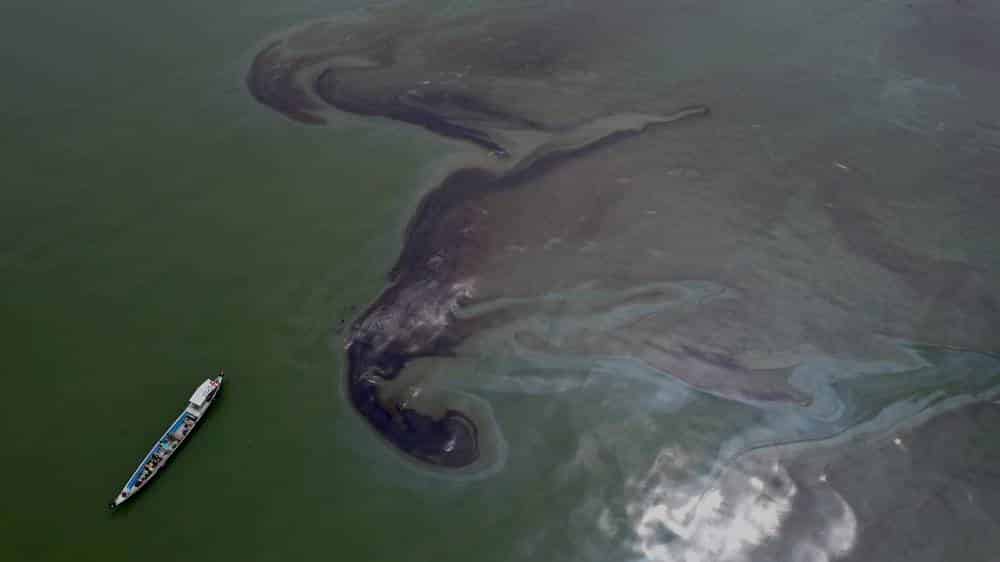
A thick layer of oil can be seen across the water’s surface approximately four kilometers from the coastline in Tibaguin Island, Hagonoy, Bulacan. The oil spill from capsized tanker MT Terra Nova, which was carrying 1.4 million liters of oil, is affecting the municipal waters of several areas, including Bulacan, Cavite, and Bataan. Aerial images reveal the extensive spread of the oil spill from MT Terra Nova, showing the vast damage inflicted on the affected waters and ecosystems on which communities depend for their livelihood and sustenance. Greenpeace is calling on President Ferdinand Marcos Jr. to make oil and gas companies pay for polluting our waters and fueling the climate crisis.
MANILA, Philippines — The Philippine Coast Guard (PCG) on Monday said it is still verifying reports that the slick from the sunken motor tanker in Manila Bay has reached some shorelines in Cavite.
Coast Guard Station Bataan Lt. Commander Michael John Encina said the PCG already coordinated with the Department of Interior and Local Government (DILG) and the Department of Environment and Natural Resources to identify areas affected by the oil spill from the sunken Motor Tanker (MT) Terra Nova.
READ: PH Coast Guard: Oil spill from sunken tanker in Manila Bay lessened
“There are some reports in Cavite, kanina sinabi ng officer nila doon, so ito ‘yung isa sa mga vine-verify pa natin,” Encina said in a press conference.
(There are some reports in Cavite, according to an officer there. So this is one of the things we are verifying.)
Earlier, fishers’ group Pambansang Lakas ng Kilusang Mamamalakaya ng Pilipinas (Pamalakaya) reported that the oil spill had already reached the shorelines of Tanza.
“Fisherfolk and coastal residents in this coastal town this morning were disrupted by the distinctive odor associated with the oil spill,” Pamalakaya said.
It added that the fisherfolk are also worried that the slick might contaminate their resources and affect their produce’s farm gate prices.
The group said it will inspect municipal waters in Cavite to determine the extent of the oil spill and seek rehabilitation for the affected areas.
Based on the latest forecast from the University of the Philippines Marine Science Institute, the slick will reach Metro Manila by July 30 at 1 a.m. It may also “be transported” and expected to “landfall” in the coastal areas of Noveleta, Rosario, Tanza, Naic, and Ternate.
Encina, however, has assured the public that the slick has lessened.
Earlier, the PCG said the oil from MT Terra Nova spread about 12 to 14 kilometers across Manila Bay.
But based on the agency’s aerial monitoring on Monday morning, the oil spill’s extent lessened to about 2 to 4 nautical miles (nm) or 3.7 to 7.4 kilometers, “going southeast,” Encina said.
He added that the slick is “minimal” and “very controllable,” translating to 1 liter leak per hour or 24 liters daily. (with reports from Arianne Dennise Cagsawa, INQUIRER.net intern)